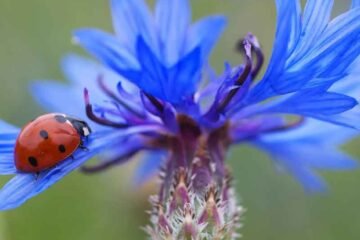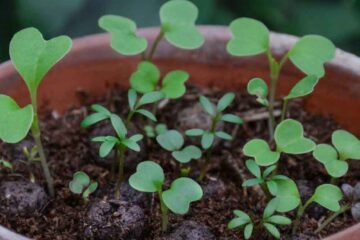How to Make Compost More Wildlife Friendly in the UK
Wildlife-friendly composting is a growing trend that prioritizes environmental sustainability and biodiversity in gardening practices. In the UK, the importance of such methods cannot be understated, as both gardeners and local wildlife stand to benefit immensely. While traditional composting primarily focuses on soil enrichment and waste management, wildlife-friendly composting extends its scope to create habitats and food resources for various species native to the region. By adopting these practices, gardeners can contribute to a balanced ecosystem, fostering natural pest control and pollination.
One of the primary benefits of wildlife-friendly composting is the enhancement of garden biodiversity. This type of composting creates a nurturing environment for insects, birds, and small mammals that play crucial roles in the ecosystem. For example, decomposer organisms, such as earthworms and fungi, thrive in a compost pile and ensure the breakdown of organic matter into rich humus. This humus not only enriches the soil but also serves as a habitat and food source for a variety of wildlife, creating a dynamic interaction between gardening efforts and local fauna.
However, traditional composting methods can inadvertently harm wildlife. Rapid decomposition processes can produce excessive heat or attract pests, deterring native species from settling in the garden. Moreover, the use of non-organic waste or chemical additives can lead to soil contamination, adversely affecting wildlife health. These complications underscore the need for composting techniques that are mindful of ecological balance, encouraging the use of organic waste and careful management of compost piles.
Adopting wildlife-friendly composting practices involves simple but effective measures, such as avoiding chemical additives, incorporating diverse organic materials, and ensuring suitable micro-environments for composting organisms. These steps not only enhance the compost quality but also foster a habitat conducive to local wildlife. By understanding and implementing these eco-friendly techniques, gardeners in the UK can significantly contribute to preserving their local ecosystems, ensuring a thriving and diverse natural environment.
Choosing the Right Compost Bin and Location
Selecting the appropriate compost bin is pivotal in making your composting efforts wildlife-friendly. There are various types of bins available, such as wooden, plastic, or metal bins, as well as open compost piles. Enclosed bins, for instance, are particularly beneficial as they help deter larger animals such as foxes or badgers while still allowing smaller beneficial insects and microorganisms to access the compost. Opting for bins with secure lids and fine wire mesh can further enhance safety by preventing wildlife from entering while still facilitating airflow.
The location of your compost bin plays an equally significant role. To make your compost bin more accessible to wildlife while minimizing disruptions, consider placing it in a partially shaded area, away from heavy human traffic. An ideal spot would be near a garden or beneath trees, which can provide cover and make it easier for wildlife like hedgehogs and birds to visit. Avoid placing the bin too close to your house or pathways to reduce the likelihood of unintended encounters with wildlife.
Additionally, various bin setups can help mitigate potential wildlife risks. For instance, raised compost bins can prevent ground-dwelling animals from easily accessing the compost. If using an open compost pile, surrounding it with a small fence can deter larger animals while still allowing appropriate ventilation. By using natural materials such as hedgerows to create a barrier, one can effectively integrate the compost area into the surrounding landscape, making it less intrusive.
Overall, the thoughtful selection of compost bin types, strategic placement, and the incorporation of protective measures are crucial steps in creating a wildlife-friendly composting environment. These practices not only promote sustainability but also foster harmony between your composting efforts and local ecosystems.
Adding the Right Materials for Wildlife-Friendly Compost
Creating a wildlife-friendly compost heap is an intricate dance of selecting and balancing the right materials to nurture both your garden and the local fauna. Successful composting begins with the understanding of green and brown materials. “Green” materials are rich in nitrogen and generally include kitchen scraps like fruit and vegetable peels, coffee grounds, and freshly cut grass. These are essential for initiating the decomposition process. On the other side, “Brown” materials, such as dried leaves, cardboard, and straw, are rich in carbon which serves as a vital energy source for decomposing organisms. A mix of both ensures that your compost pile remains active and odour-free, which is beneficial for attracting wildlife.
Moreover, incorporating specific natural additives can significantly enhance the habitat for local fauna. Eggshells are a beneficial addition, providing a natural source of calcium which aids in balancing the pH levels of your compost. Adding branches and twigs can create shelters within the compost heap, offering safe havens for small mammals and insects to thrive. These materials also help increase airflow, fostering a healthy compost environment. Additionally, introducing some soil or partially decomposed compost can expedite the breakdown process by introducing essential microbes.
It’s equally crucial to avoid including materials that could prove harmful to wildlife. Refrain from adding any products containing pesticides or synthetic chemicals, as these can be toxic. Similarly, avoid composting meat, dairy, and oily foods, which not only produce foul odors that deter beneficial wildlife but also attract pests like rats. Pet waste should also be excluded due to the risk of transmitting harmful pathogens.
By attentively choosing the right materials and fostering a balanced environment, your compost heap can become a sanctuary for a diverse array of wildlife. This not only leads to richer soil for your garden but also contributes positively to local biodiversity, creating a thriving ecosystem right in your backyard.
Maintaining a Wildlife-Friendly Compost System
Sustaining a wildlife-friendly compost system requires diligent maintenance practices to ensure the habitat remains suitable for various forms of wildlife. One key aspect is the regular turning and aerating of the compost heap. Aeration helps to maintain the necessary oxygen levels that encourage the breakdown of organic materials while simultaneously deterring harmful anaerobic bacteria that can produce unpleasant odors. Turning the compost with a pitchfork or a dedicated compost aerator every few weeks ensures even decomposition and maintains the airflow, creating a balance that favours beneficial organisms.
Managing moisture levels is another critical factor. Compost heaps thrive on an optimal ratio of moist and dry materials. If the pile is too dry, decomposition slows down significantly, depriving wildlife of an enriched habitat. Conversely, a waterlogged compost heap can become a breeding ground for pests and diseases that could harm beneficial wildlife. Ensuring the compost is comparable to a squeezed-out sponge helps maintain the ideal moisture level, fostering an environment conducive to both composting and wildlife sustenance.
Monitoring the compost for any signs of issues is an ongoing task. Common problems such as foul odors, excessive pests, or slower-than-expected decomposition require immediate attention. Rectifying these issues promptly ensures that the compost heap remains a thriving ecosystem for wildlife. Periodically checking on the state of the compost allows for early detection and correction of potential problems.
When it comes time to use the compost, caution is paramount to avoid disturbing resident wildlife. Signs of readiness include a dark, crumbly texture, an earthy smell, and the absence of identifiable organic material. Prior to extracting the compost, it’s advisable to gently probe the heap, ensuring no creatures are inadvertently displaced or harmed in the process. Employing a slow and careful approach during this phase ensures the wildlife is respected and minimally disturbed.


